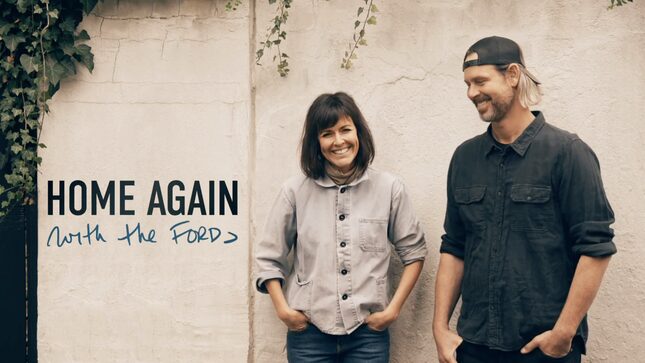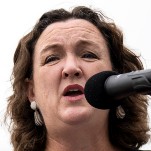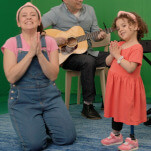Will People Still Watch HGTV If It Becomes More Like Bravo?
As HGTV focuses more and more on the personalities behind the reno, will audiences keep tuning in?
Latest
Screenshot: HGTV
Leanne Ford, cohost of Home Again with the Fords, is in crisis, poised on the brink of a rare meltdown. Normally unflappable, she finds herself stymied by a green stove—specifically, how it looks against the walls she has opted to stain with coffee. Something is off. The ceilings, she realizes, her panic rising. In order to vault the ceilings for the house she’s designing for her sister-in-law, Leanne and her brother Steve have exposed the joists, revealing rich, dark wood that goes against her typically spare and bohemian design aesthetic. For Leanne, it’s too much. The cure is white paint, like a deep breath, and wrapping the stove in clay-colored vinyl. But this is no mere aesthetic matter: The small cottage in question is particularly special, providing a home base for her sister-in-law to visit with family, including Leanne’s daughter Ever, and Leanne wants to make sure it meets her exacting standards. The result is beautiful: a home for her family to enjoy for years to come.
The latest addition to the HGTV lineup Home Again with the Fords is itself a renovation. The Ford siblings first appeared on Restored by the Fords, which ran on the channel in 2019. I loved the show in part because it stood out from the typical HGTV offerings, which tend toward pre-packaged, tightly edited, family-first sentimentality. Focused more on renovation than interpersonal stories about family, it had a dash of weirdness too esoteric for the mass-market mega-success of the Gaineses. Leanne’s aesthetic is more contemporary than the other interiors produced on the channel. White is her favorite color, and all of her interiors look cool and anesthetic, like an art gallery or the display floor of a lovely CB2. But she’s not afraid to do something like, say, paint a swimming pool black. The Fords are also siblings, and so there are no Mom and Dad vibes in their presentation.
But the show lasted just two seasons, and now the Fords are back with some new HGTV repackaging, in a glossy, polished hour of television that manages to retain some of the original show’s charm while hewing to the standards set by its platform. The evidence of HGTV’s new direction is clear, from a 2020 press release announcing a new slate of programming: “Many of HGTV’s newly greenlit series will fit well in its ‘renovation, design and real estate’ wheelhouse, but some will lean into the emotional highs and lows that the participating stars and families face,” it reads. The Ford siblings’ pivot is just the beginning of what the network wants to do with its existing properties and offers a bellwether of what the future might hold for any aspiring home renovation stars looking to make it big. The focus is, as always, on the homes their stars are renovating, but increasingly, it is about the characters behind the renovations, too.
By now, the HGTV formula is clear: telegenic hosts renovating houses into something more than mere domiciles—important and crucial vessels for memories to flourish and for roots to take hold. What was missing from Restored by the Fords, by this logic, was family, which has been pumped aggressively into this new project. Home Again With the Fords is similar to all other HGTV shows, in that at the end of a tight hour of television, there’s a grand reveal of a recently renovated home and, hopefully, tears. The twist that differentiates this show is the theme of homecoming: Leanne and her husband Erik moved back to her hometown of Pittsburgh to raise her daughter, Ever, and to be closer to family. Her brother Steve, an affable contractor with an enduring fondness for backwards baseball hats, is back to reprise his role as Leanne’s necessary foil. Together, the Fords help people who have chosen to move back to Pittsburgh find their forever home, in a direct response to the trend of people doing just that during the course of the pandemic.
-

-

-

-

-

-

-

-

-

-

-

-

-

-

-

-

-

-

-

-

-

-

-

-

-

-

-

-

-

-

-

-

-

-

-

-

-

-

-

-








































